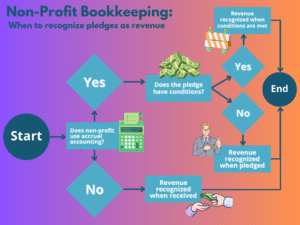As a bookkeeper, you’re not just entering transactions—you’re in a unique position to recognize financial patterns that may carry serious consequences for your clients. One example that shows up frequently on S corporation balance sheets is the shareholder loan. Many business owners don’t understand what it is or how it ended up in their records.
In reality, these “loans” may not be loans at all. If that is the case, your client could face back taxes, penalties, and interest.
Why Shareholder Loans Appear
A shareholder loan often appears when a shareholder withdraws more money than their basis allows. To avoid triggering immediate tax consequences, a tax preparer may reclassify the excess distributions as a loan.
This is typically handled through a journal entry at year-end. Over time, these balances can increase, often without the business owner understanding the implications.
The Problem with That Approach
If the IRS examines the company and determines that the shareholder loan is not legitimate, it may be reclassified as a distribution. That result means the shareholder would owe tax on the withdrawn amount, along with potential penalties and interest due to underreported income. Several years of both business and personal tax returns may require amendments.
This is where your role as a bookkeeper becomes especially valuable.
What the IRS Considers Legitimate
To evaluate whether a shareholder loan is valid, the IRS considers several questions, including:
- Does the shareholder control the corporation?
- Has the corporation issued dividends or distributions in the past?
- Is there a formal, signed loan agreement?
- Does the agreement include a maturity date?
- Has interest been charged or accrued?
- Was the loan secured with collateral?
- Has the corporation ever required repayment?
- Is the shareholder financially able and willing to repay the loan?
- How were the withdrawals recorded—were they identified as loans throughout the year, or reclassified later?
If these elements are missing, the IRS is more likely to conclude that the funds were distributions, not loans.
What You Can Do as a Bookkeeper
When you see a shareholder loan on the balance sheet, ask for documentation. If the client cannot provide any, use that moment to initiate a conversation that adds value.
Although you are not expected to offer legal or tax advice, you can help your client understand the options available:
- Legitimize the loan by creating documentation, establishing a payment plan, and recording payments properly.
- Reclassify the amount as a distribution, which may require amended tax filings and additional tax payments.
- Accept the risk, with full awareness of the consequences that could result from an audit.
Whatever path the client chooses, your role is to ensure they are making an informed decision.
How This Distinguishes Your Service
Many bookkeepers focus only on data entry. When you review the balance sheet, ask the right questions, and help clients understand financial risk, you become far more than a technician. You become a trusted advisor.
You don’t need to be a tax expert to provide this level of insight. You simply need to stay observant, proactive, and committed to helping your clients understand their financial picture and the potential outcomes tied to their decisions.
🎥 Want to Learn More?
If you’d like a deeper explanation—and a real-world example of how to talk to clients about shareholder loans—watch my video:
➡️ Are Clients’ Shareholder Loans Legit? What Bookkeepers Need to Know
This video is part of my Client Advisory for Bookkeepers playlist, designed to help you become a more valuable advisor and set yourself apart.





